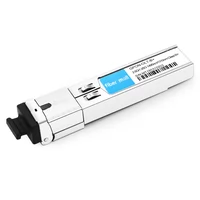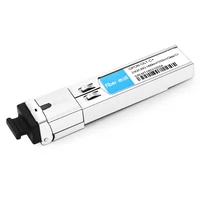In the changing world of communication, the need for high-speed internet is on a steady rise. Many advanced technologies are being implemented to fill this gap, and among them is the Nokia GPON (Gigabit Passive Optical Network) SFP (Small Form-factor Pluggable) module, which acts as a bridge between high-capacity broadband services. The main objective of this article is to discuss what Nokia GPON SFP entails by looking at its technical specifications, operational benefits, and application scenarios, among other things. When readers have knowledge about features and benefits of such kind of technology like this one here it provides them with insights on how they can improve network performance through GPON solutions while still serving modern communication infrastructure needs that are rapidly growing.
Table of Contents
ToggleWhat is a Nokia GPON SFP Module?
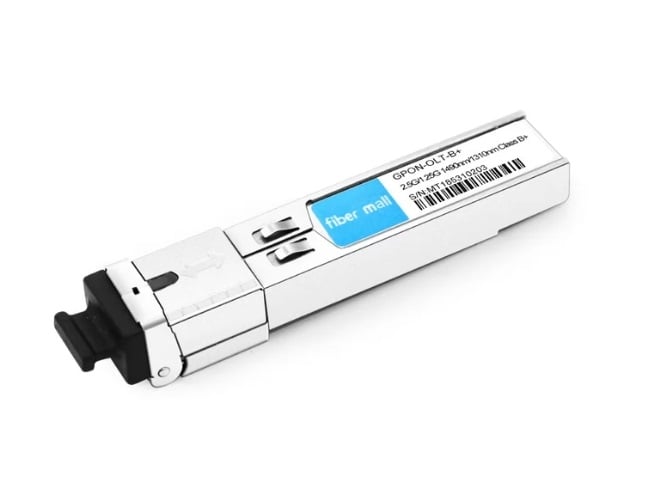
Understanding GPON Technology
Gigabit Passive Optical Network (GPON) is a telecommunications technology that delivers high-speed internet via fiber optics using passive optical components. Throughput within a point-to-multipoint topology allows many users to share one fiber at the same time. GPON supports downstream rates of 2.5 Gbps and upstream rates of 1.25 Gbps which makes it suitable for applications with heavy bandwidth usage. To effectively transmit multiple services such as voice, video, and data, this system utilizes wavelength division multiplexing (WDM). GPON has been widely implemented in homes and businesses alike because it can improve network efficiency while lowering operational costs.
Features of Nokia GPON SFP Modules
Nokia GPON SFP modules have been designed with high performance and reliability in mind for optical network systems. Here are some key features:
- Fast Speeds: These modules support data transfer rates of up to 2.5Gbps on downstream transmission, which allows for the efficient handling of bandwidth-intensive applications.
- Small Design: It has a small form-factor pluggable design that makes it easy to install and flexible for network configuration, thereby suiting various deployment scenarios.
- Wavelength Division Multiplexing (WDM): Integrating WDM technology enables simultaneous transmission of voice, video and data, thus making use of available bandwidth more optimal.
- Extended Coverage Area: With the ability to cover distances as far as 20km, these Nokia GPON SFP Modules ensure strong connections even in rural areas or regions outside cities.
- Interoperability: The modules are made compatible with many types of networking devices hence they can be easily integrated into existing GPON infrastructures without causing any disruptions or faults.
- Reliability/ Robustness: Manufactured using industrial grade materials/components; these units can withstand tough environmental conditions while maintaining steady performance levels throughout their lifespan.
All these features work together to enhance the capability of GPON networks, thus enabling service providers to meet increasing demands for high-speed internet and other digital services.
Common Applications for Nokia GPON SFP Modules
Nokia GPON SFP modules are used in various applications to improve network connections and service delivery in different contexts. Common uses of these modules include:
- Residential Broadband Services: These are mainly found in FTTH architectures where high-speed internet is provided to homes for streaming, gaming, telecommuting purposes among other things.
- Enterprise Networking: In corporate environments, Nokia GPON SFP modules enable the deployment of strong network infrastructures that support scalable and reliable broadband links for internal operations as well as external interactions with customers.
- Mobile Backhaul: These are essential components of mobile networks’ backhaul sections that establish a connection between the base stations and the core nodes. Consequently, this aids in creating an environment whereby wireless operators can avail high rate data services to final users.
As such, these applications demonstrate how flexible and useful Nokia GPON SFP modules can be when it comes to meeting the needs of modern communication systems.
How to Choose the Right GPON SFP Transceiver for Your Network?
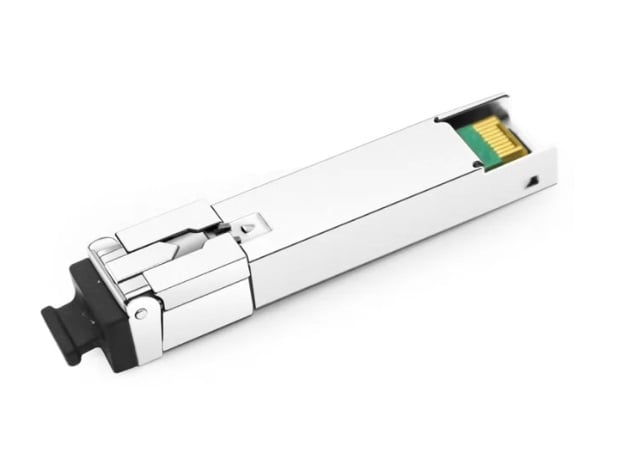
Factors to Consider: SFP, OLT, and ONT
When it comes to choosing the right GPON SFP transceiver for your network, there are a couple of things to keep in mind:
- SFP Compatibility: Check whether or not this module works with your existing optical line terminal (OLT) and optical network terminal (ONT) systems; look at the specs for supported wavelengths and data rates.
- OLT Specs: How many ports do I need? What distances will I be covering? What is the maximum bandwidth supported by my OLT? Answering these questions should help guide you towards an appropriate SFP based on what it can do relative to those requirements.
- ONT Requirements: Considerations here include assessing range limitations within which ONTs must operate as well as identifying service types each ONT will require; only then can one begin thinking about whether selected SFPs might cope with anticipated levels of traffic and demand across various services.
By taking into account these factors, you will be able to select GPON SFP transceivers that meet your particular network needs more accurately.
Compatibility with Existing Network Hardware
To include GPON SFP transceivers in your network, it is mandatory to verify if they are compatible with other hardware components. You should examine whether the current OLT and ONT devices support these transceivers, usually by checking their working wavelengths as well as data rates. Secondly, connector types, together with pin configurations, must be taken into account so that physical connections are made without any problem. Moreover, find out from the documentation of your network devices about firmware requirements or limitations that can impact compatibility. Considering all these factors will enable you to have a successful integration process while keeping the performance of the network at its best level.
Setting Up a GPON SFP Module in Your Optical Network
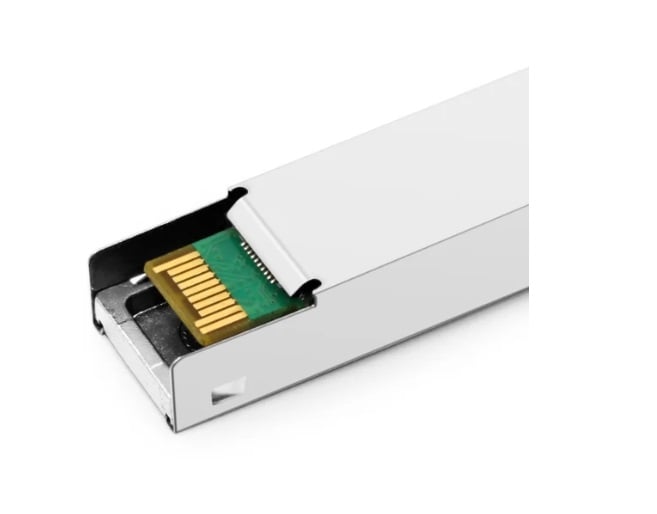
Step-by-Step Installation Guide
- Pre-Installation Verification: Ensure that the GPON SFP module works with your OLT and ONT devices in accordance with the stated wavelengths and data rates.
- Power Down Equipment: Switch off all necessary network equipment before installation to avoid any damage or disruption during this process.
- Insert SFP Module : Insert GPON SFP module carefully into the provided slot of OLT, ensuring that it is seated securely.
- Connect Fiber Cable: Connect appropriate optic fiber cable to the SFP module ensuring that it fits tightly for a signal integrity maintenance.
- Re-Power Equipment: You should power the OLT and ONT devices again so that they can boot up completely after making all connections.
- Verify Connection: Confirm that the OEM management interface has detected the SFP module on your network device(s).
- Test Network Performance: After installing this technology, somebody should check if there are any changes in data transmission speed of computer networks and their general performance.
Configuring the OLT and ONT Devices
- Access Device Interface: Use a web browser or terminal emulator to connect to the OLT’s management interface. Type in the device IP address and log on with appropriate credentials.
- Update Settings for GPON: Go to the GPON configuration section. Provide settings for the newly installed GPON SFP module, including relevant wavelength settings and service profiles.
- Provision the ONT: Input necessary details like Serial Number (SN) and unique identification code in ONT Configuration to establish a secure connection with OLT.
- Assign VLANs and QoS Settings: Set up Virtual Local Area Networks (VLANs) for traffic separation while allocating bandwidth effectively by configuring Quality of Service parameters (QoS).
- Apply Changes and Reboot: Save your configurations, if any, then reboot your devices when asked.
- Monitor Status: Continuously monitor these performance measures via management interface following configuration, thus ensuring efficient operation of OLT/ONT devices free from error conditions.
By following these steps, you will be able to optimize network performance and make your OLT and ONT devices work seamlessly with the already installed GPON SFP module.
Common Issues and Troubleshooting Tips
During the configuration of OLT and ONT devices, there are a few common problems that can be encountered by users. Here are some of those issues and how to fix them:
- No Connectivity: If an ONT fails to connect with an OLT, you should check physical connections, making sure that optical fibers are properly connected and clean. Also, confirm that the Serial Number (SN) of ONT and authentication parameters are configured correctly in the OLT.
- Signal Quality Issues: Poor signal quality may occur because of too much loss in the optical path. You should inspect if there is any damage or improper termination on cable connections. Use optical power meters to measure signal strength and ensure it falls within acceptable levels.
- VLAN Misconfigurations: Data traffic problems can result from wrong VLAN assignments. Make sure VLAN IDs configured in both OLTs match each other as well as appropriate QoS settings applied for every VLAN so that bandwidth is managed effectively.
These typical faults need to be fixed immediately together with reference materials based on OLTs and ONTs documentation for the sake of having stable network environment . Always keep firmware updated against potential compatibility issues with new GPON modules.
Frequently Asked Questions About Nokia GPON SFP Transceivers
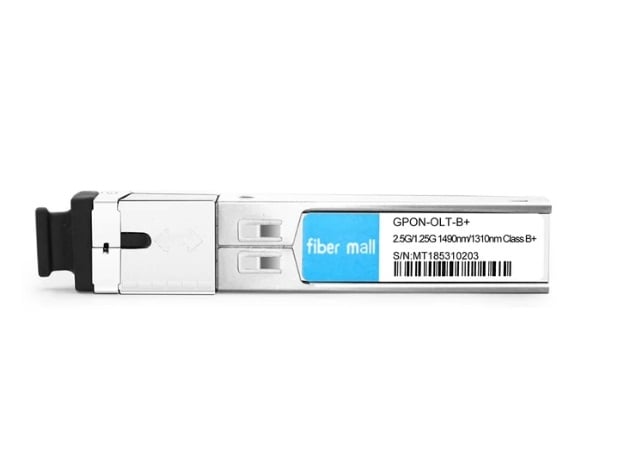
What is the difference between GPON SFP and GPON ONT SFP?
Optical Line Terminal (OLT) uses the GPON SFP (Small Form-factor Pluggable) transceivers to transmit and receive data over a Passive Optical Network (PON). On the other hand, the GPON ONT SFP transceivers are designed to work with Optical Network Terminals (ONTs) where they receive data from OLT then transmit it to end-user devices. Their most notable difference is how they function in a GPON network; SFP modules located at OLTs are responsible for managing upstream and downstream traffic while distributing them, whereas ONT SFP’s main role involves converting such traffic for local consumption after reception.
How to Ensure Compatibility with Nokia Hardware?
To make sure that the Nokia hardware is compatible, you should check if the firmware versions of both OLT and ONT devices match those of Nokia. Ensure that you use only SFP transceivers that are approved to work with particular Nokia models because different generations of hardware may have different compatibility levels. Moreover, refer to technical documentation from Nokia for supported configurations and recommended settings. System audits should be carried out frequently so as to update device configuration where applicable as this will foster better interconnectivity within a network setting.
What are the Best Practices for Fiber Optic Maintenance?
Optimal performance and a long life of service are some of the reasons why maintenance should be done on fiber optic networks. The following are some of the best practices drawn from expert opinion and industry standards.
- Regular Inspections: Make a habit of visually checking the cables and connectors used in fiber optics for signs like dirt, damage or contamination which may indicate wearing out. Fiber health can also be tested frequently by use of an optical time-domain reflectometer (OTDR).
- Cleaning and Repair: Signal quality can be affected greatly by dirt or oil hence connector cleanliness should be maintained using kits for cleaning fiber optics. Any broken fibers should be repaired immediately while those that cannot be fixed must be replaced at once so that only small parts are disrupted.
- Environmental Considerations: Drastic weather conditions could destroy cable hence it should be safeguarded against them. Physical stress as well exposure to temperature changes, moisture or chemicals ought to be prevented by appropriately routing and housing cable connections.
- Documentation and Monitoring: Details about installations, tests carried out during inspection as well activities done in order to keep these gadgets functioning properly need to be recorded down properly. This information is useful when it comes to trouble shooting, trend analysis then planning for future upgrades/repairs.
- Training & Expertise : All staff members who set up fibers plus maintaining them must have necessary skills in this field so they can follow correct procedures needed here. Additionally there should always be refresher courses on emerging technologies related with their care given from time to time.
Systems based on fiber optics will see significant improvements if these steps are taken into account since they also add years into their life span through better operation.
Expert Reviews and User Ratings for Nokia GPON SFP Modules
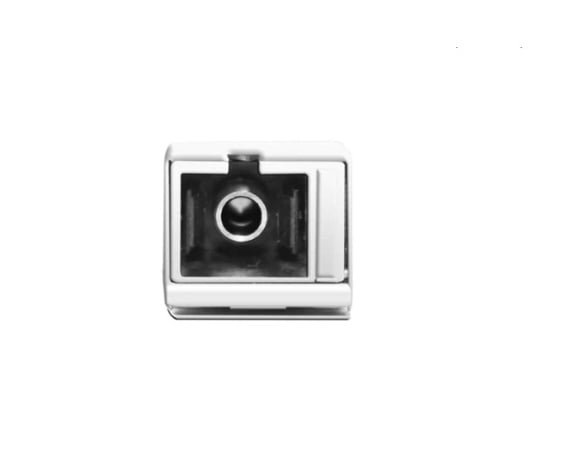
Customer Reviews on Thunder-Link.com
- Performance: People constantly say that Nokia GPON SFP modules have good signal quality and bandwidth performance. They say this by noting few lost packets during transmission, as well as stable connections always being present.
- Installation: The installation process is easy according to customers who also said it can be used with different platforms without any problems and integrated with other networks easily too.
- Durability: A lot of reviews talk about how strong these things are built which is why many people love them for being able to withstand harsh environmental conditions where others fail such as extreme heat or coldness etc. That’s not all because durability extends even further than just physical strength but also in terms of time spent working out there – they last long!
- Support: Reviews show that Nokia provides strong technical support; some users were able to fix their problems, while others received timely help from the company.
- Value: Most people believe that these devices may not be cheap, but considering their reliability and overall performance, they are worth every penny.
Professional Ratings from Industry Experts
- Quality Assurance: Industry experts say that Nokia GPON SFP modules meet high quality standards so that they work well for many different uses.
- Technological Innovation: The design changes have been identified by reviewers as being good because they increase how fast information travels, and its dependability may lay the foundation for Nokia’s dominance in this area of fiber optic communication technology.
- Interoperability: These professional workers also mention how easily these units can combine with other equipment already installed, which makes them ideal for any telecommunications environment setup.
- Market Competitiveness: One thing worth noting is that when compared side-by-side against similar products, Nokia GPON SFPs are still sold at a lower price hence making them more affordable than most other brands.
- Sustainability: Another positive aspect of these devices, according to evaluations, is their sustainability feature whereby they can be reused, thus minimizing waste and enhancing efficiency during deployments made by Nokia.
Where to Buy Compatible Nokia GPON SFP Modules?
Best Online Retailers and Prices
- Amazon: they offer competitive prices that usually range between $30 and $100 per unit, along with express shipping.
- Newegg: provides discounts, costing roughly from $35 to $90, often including offers for large purchases.
- CDW: it has good customer service, and charges vary between $40 and $120; the company also has options for corporate purchasing.
- Digi-Key: a wide range of products is offered at Digi-Key Electronics. This company is outstanding in such a way that numerous customers find their needs met on their site. The price ranges of its products are usually between $35 and $115 which makes them affordable to all consumers regardless of whether they are individuals or businesses.
- Mouser Electronics: Mouser Electronics sells SFP modules on regular basis. Some of these modules go for about $40 while others cost as much as approximately $130 depending on their technical features and compatibility with other devices.
- eBay: This depends purely on the product specifications (other factors include make- new or used) because some can be bought by as low as 20 dollars while other are sold at up to 100 dollars.
Warranty and Return Policy Information
When you buy a Nokia GPON SFP module that is compatible, you should think first about the warranty and return policies put in place by different sellers. The majority of vendors who have good reputation provide warranties of standard form; which usually lasts for one to three years within which they take responsibility for any material or workmanship defects. This often involves replacement options as well as repair services so that their customers can always get dependable products.
Return policies generally allow you to return items within 30-60 days after purchase on condition that they are still in their original state and packaging. It’s advisable to go through individual terms from every retailer because some might have unique conditions or restocking charges. Making sure you follow all necessary steps stated in both warranties and returns can save you money and make it easier to solve problems if any occur later on.
Payment Options and Shipping Details
- CDW: They allow different types of payment methods such as credit cards, purchase orders and GPCs. There are standard shipping options available and overnight delivery is offered in case of emergency. Normally it takes them a day or two to process an order.
- Digi-Key: Credit cards, PayPal, and wire transfers are some of the many ways you can pay at Digi-Key. You have the option to choose between ordinary or fast shipping; however, if you place your order before a certain time, they will ship it on the same day. Depending on which shipping method you select, delivery time may vary.
- Mouser Electronics: Multiple payment methods are supported by Mouser Electronics including credit cards, PayPal and net terms for businesses. You can choose from express or standard shipping services while placing an order. If the order is placed before a specific cutoff time then it will be shipped on the same day itself which ensures that the product reaches the customer on time.
Reference Sources
Frequently Asked Questions (FAQs)
Q: What is Nokia GPON SFP?
A: The Nokia GPON SFP is a Gigabit Passive Optical Network Small Form-Factor Pluggable Transceiver (GPON SFP) module that comes in variants like the Nokia G-010S-A. It is designed to be integrated into different network appliances to transform optical signals into electrical ones for use in switches, routers, etc.
Q: What are the main features of the Nokia G-010S-A 3FE46541AA GPON ONT SFP fiber module?
A: Key features of the Nokia G-010S-A 3FE46541AA GPON ONT SFP fiber module include support for up to 20km transmission over single-mode fiber (SMF), ITU-T G.984 compliance with GPON standards, SC connector type and Digital Diagnostics Monitoring (DDM) for performance monitoring among others. Moreover, it has a data rate of 1G and works well with various network devices, such as switches and routers, because of its high compatibility level.
Q: How does one use the Nokia GPON SFP in a network setup?
A: Generally, the most common way to use this product is alongside other networking appliances like switchers or routers. The ISP’s OLT should also be connected directly with customer premises through some optical module slot where this device can be plugged in-between these two points, otherwise known as media converters, which may also act as a necessary bridge between them should there arise a need for extra distance coverage beyond what direct connection provides. Besides that, though, it could work independently, too, being an OLT itself, but such cases are rare, more so when dealing with larger networks requiring multiple connections dotted across various buildings constituting metropolitan area networks (MANs).
Q: Why is the SC connector important on Nokia GPON SFP modules?
A: The importance of having an SC connector type on Nokia’s GPON SFPS is that it guarantees a standard and secure connection for single mode fiber transmissions. It can be used with different types of fiber optic equipment, supports high-quality data transmission and thus making it ideal choice for Nokia GPON SFPs.
Q: Which firmware works with Nokia GPON SFP modules?
A: Firmwares compatible with Nokia’s GPON SFPs like G-010S-A usually need to have certain versions validated by the manufacturer. It is therefore required that certified firmwares are utilized so as to maintain stability, performance and device compatibility levels especially when dealing with GPON OLTs or any other networking devices in general.
Q: Can I use SFP modules by Nokia GPON in industrial environments?
A: Yes, You can use Nokia GPON SFP modules in different environments such as industries. They are usually equipped with a strong design that ensures reliability under harsh conditions which are generally seen at an industrial site.
Q: Where can I get the ratings and feedback for Nokia GPON SFP modules?
A: Ratings and feedback on Nokia GPON SFP modules like G-010S-A can be found on platforms like tech forums, online retail websites, or professional networking equipment review sites. These reviews provide user experience insights as well as performance and reliability information.
Q: What is the purpose of Digital Diagnostics Monitoring (DDM) in Nokia GPON SFP modules?
A: The Digital Diagnostics Monitoring (DDM) function in Nokia GPON SFP modules monitors temperature, voltage and optical power among other crucial parameters in real-time to ensure optimal performance and also help to troubleshoot network related problems.
Q: Can I use Nokia GPON SFP modules with other brands, such as Cisco?
A: Yes, usually networking equipment from other major brands like Cisco may work well with Nokia GPON SFP module. However, it’s better to check specific details about compatibility or even do some tests for smooth integration and performance.
Q: How can I make sure my Nokia GPON SFP module performs at its best?
A: To ensure your Nokia GPON SFP module performs well; use certified firmwares, follow correct installation practices, monitor regularly using DDM and make sure they work together seamlessly with switches or routers among other network devices. Moreover using high quality single mode fibers (SMF) together with SC connectors properly terminated greatly enhances performance.

